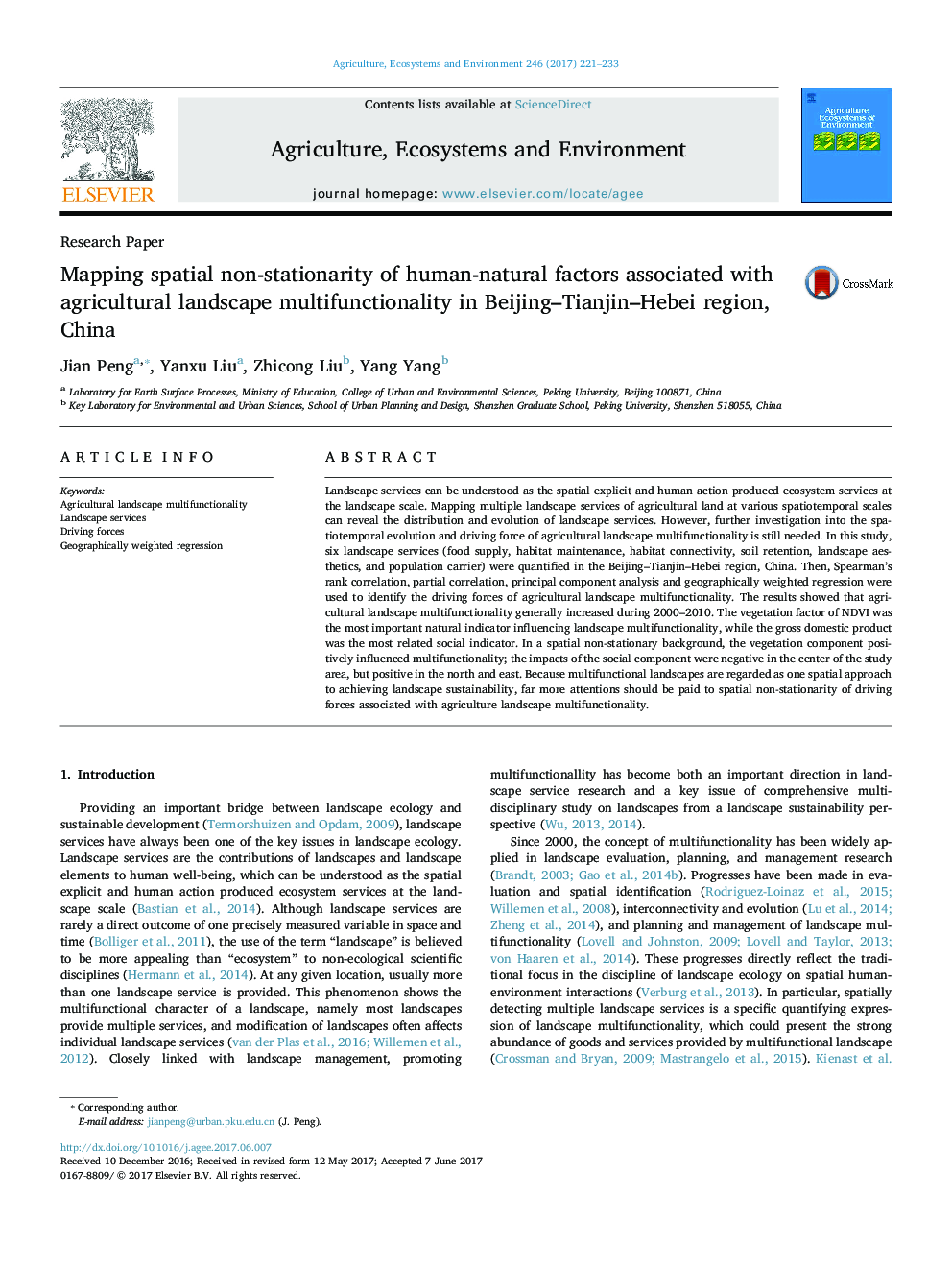| Article ID | Journal | Published Year | Pages | File Type |
|---|---|---|---|---|
| 5538045 | Agriculture, Ecosystems & Environment | 2017 | 13 Pages |
Abstract
Landscape services can be understood as the spatial explicit and human action produced ecosystem services at the landscape scale. Mapping multiple landscape services of agricultural land at various spatiotemporal scales can reveal the distribution and evolution of landscape services. However, further investigation into the spatiotemporal evolution and driving force of agricultural landscape multifunctionality is still needed. In this study, six landscape services (food supply, habitat maintenance, habitat connectivity, soil retention, landscape aesthetics, and population carrier) were quantified in the Beijing-Tianjin-Hebei region, China. Then, Spearman's rank correlation, partial correlation, principal component analysis and geographically weighted regression were used to identify the driving forces of agricultural landscape multifunctionality. The results showed that agricultural landscape multifunctionality generally increased during 2000-2010. The vegetation factor of NDVI was the most important natural indicator influencing landscape multifunctionality, while the gross domestic product was the most related social indicator. In a spatial non-stationary background, the vegetation component positively influenced multifunctionality; the impacts of the social component were negative in the center of the study area, but positive in the north and east. Because multifunctional landscapes are regarded as one spatial approach to achieving landscape sustainability, far more attentions should be paid to spatial non-stationarity of driving forces associated with agriculture landscape multifunctionality.
Related Topics
Life Sciences
Agricultural and Biological Sciences
Agronomy and Crop Science
Authors
Jian Peng, Yanxu Liu, Zhicong Liu, Yang Yang,
